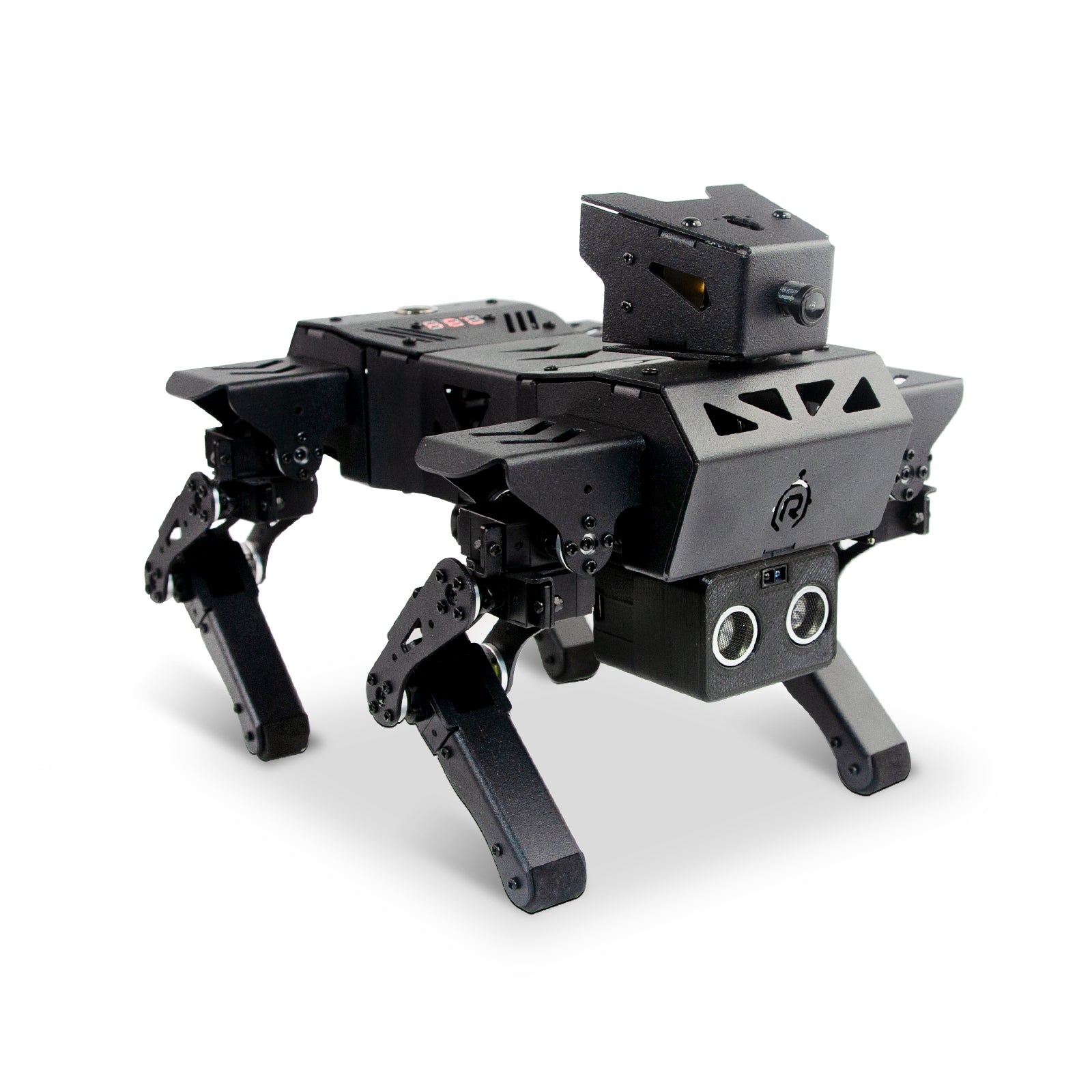The robot dog's motherboard ESP32, as its core control part, usually integrates a variety of key components and functions to ensure that the robot dog can smoothly perform various actions and tasks. The following is a brief description of the ESP32 bionic robot dog motherboard:
Core chip
ESP32: As the preferred chip for many robot dog motherboards, ESP32 is developed by Espressif Technology and is a microcontroller with integrated Wi-Fi and Bluetooth functions. It uses a dual-core Xtensa® 32-bit LX6 processor with a main frequency of up to 240MHz, with powerful computing power, which can meet the complex control needs of the robot dog.
Features: ESP32 not only supports Wi-Fi and Bluetooth communications, but also has built-in rich peripheral interfaces such as SPI, I2C, UART, etc., which is convenient for connecting with various sensors and actuators. In addition, it also has low power consumption characteristics, which helps to extend the battery life of the robot dog.
Circuit board design
Layout and wiring: The components on the motherboard are reasonably laid out and the wiring is clear to ensure the stability and reliability of signal transmission. At the same time, the motherboard will also adopt certain anti-interference measures to reduce the impact of external electromagnetic interference on the performance of the robot dog.
Interface and expandability: There are usually multiple interfaces on the motherboard for connecting external devices such as sensors, servos, and power supplies. These interfaces not only facilitate modular design and expansion for users, but also improve the flexibility and adaptability of the robot dog.
Functional module
Power management: The power management module is integrated on the motherboard, which is responsible for providing a stable power supply for the entire system. It can monitor and adjust the battery voltage to ensure that the robot dog can get enough power support in various working conditions.
Communication module: In addition to the built-in Wi-Fi and Bluetooth functions of ESP32, some motherboards will also integrate other communication modules, such as Zigbee, LoRa, etc., to meet the communication needs in different application scenarios.
Control module: The control module on the motherboard is responsible for receiving and processing signals from sensors and actuators, and controlling the actions of the robot dog according to preset programs or instructions. This module is the key to the robot dog's autonomous walking, obstacle avoidance, navigation and other functions.
Let’s talk about the robot dog core board:ESP32

